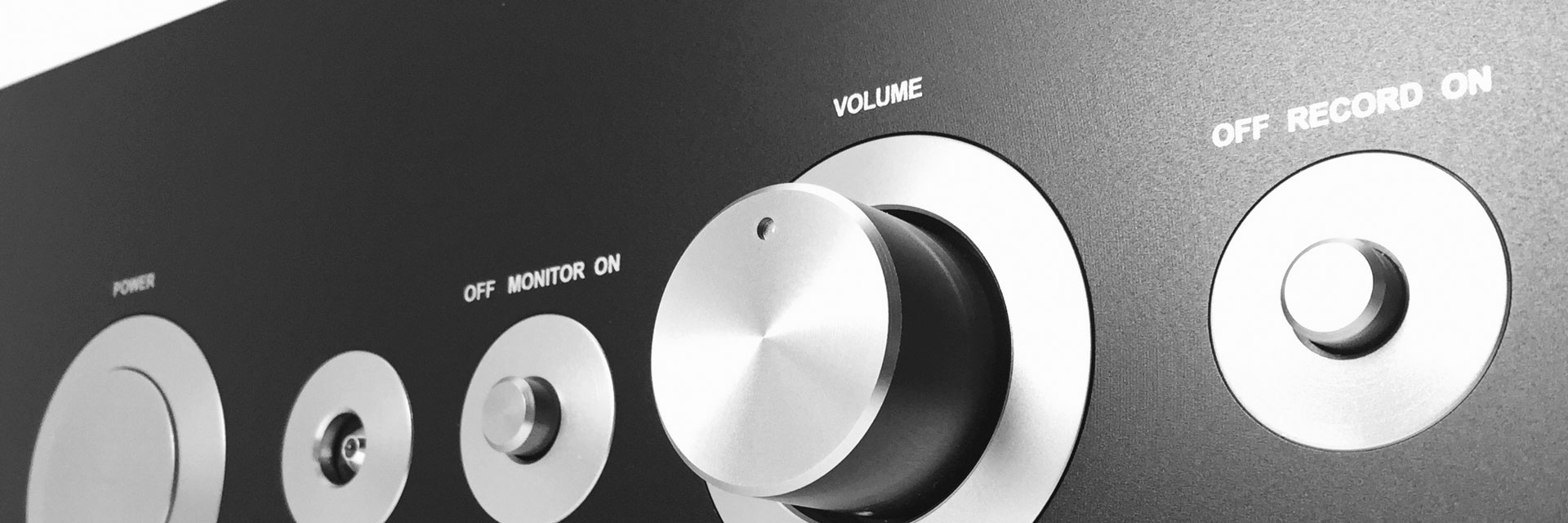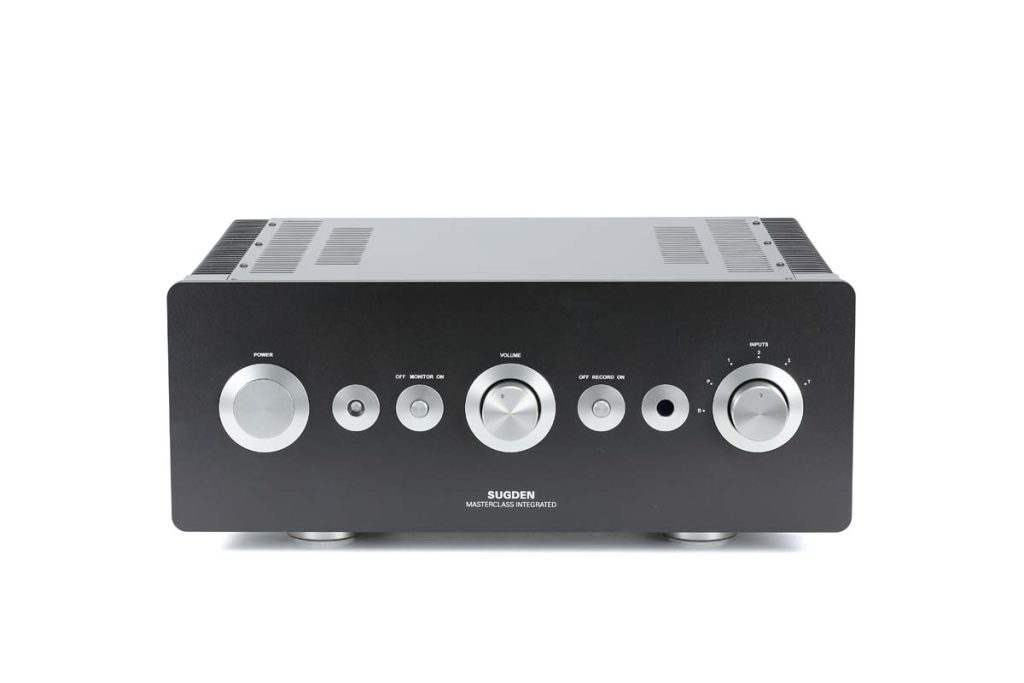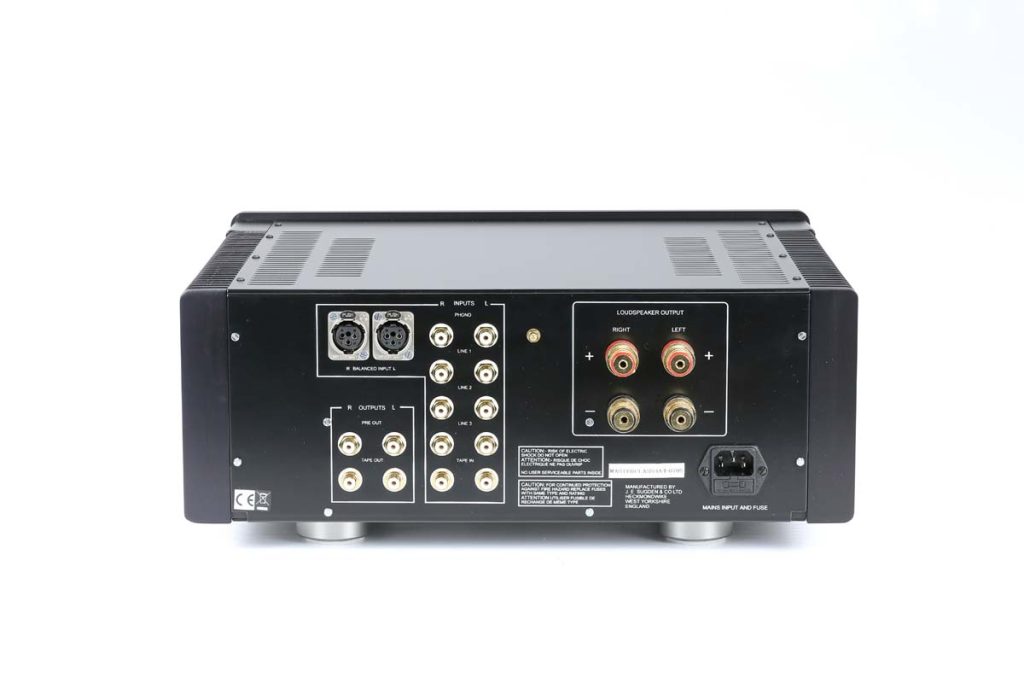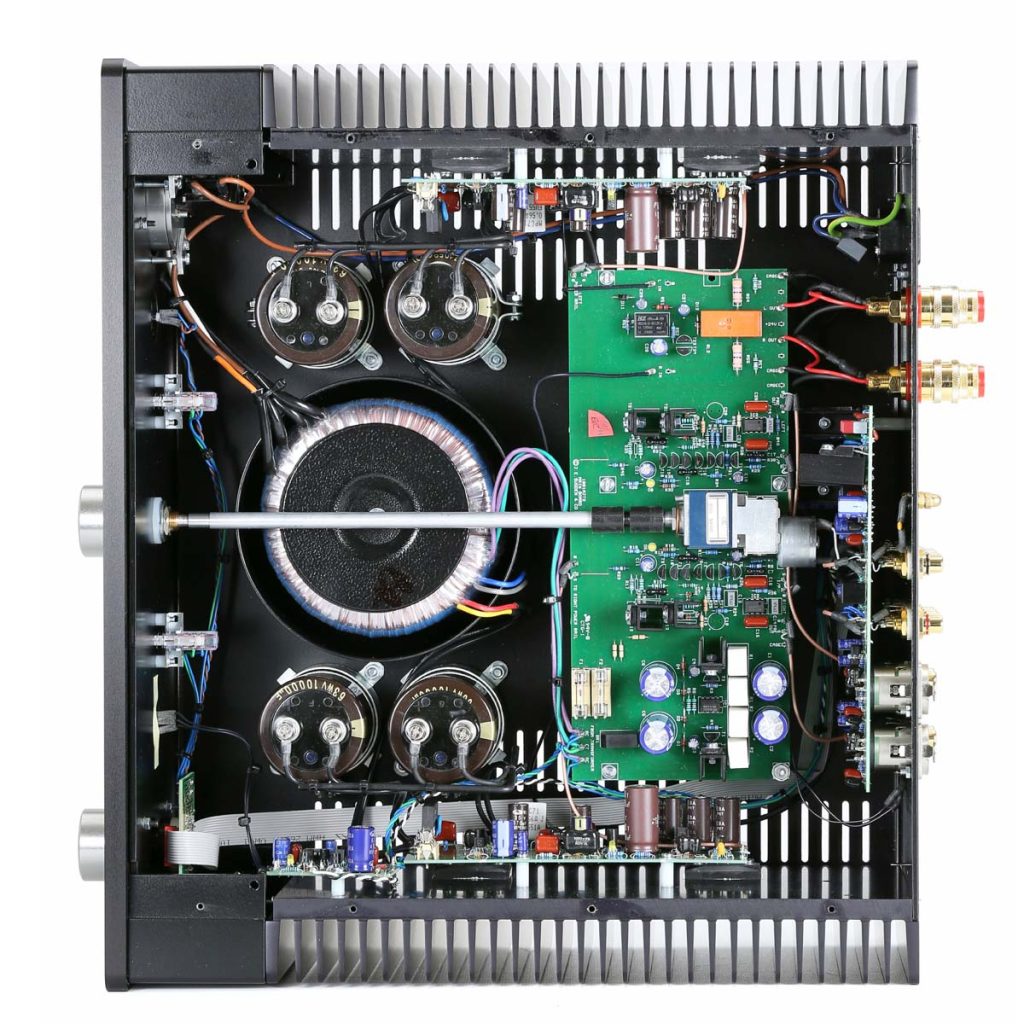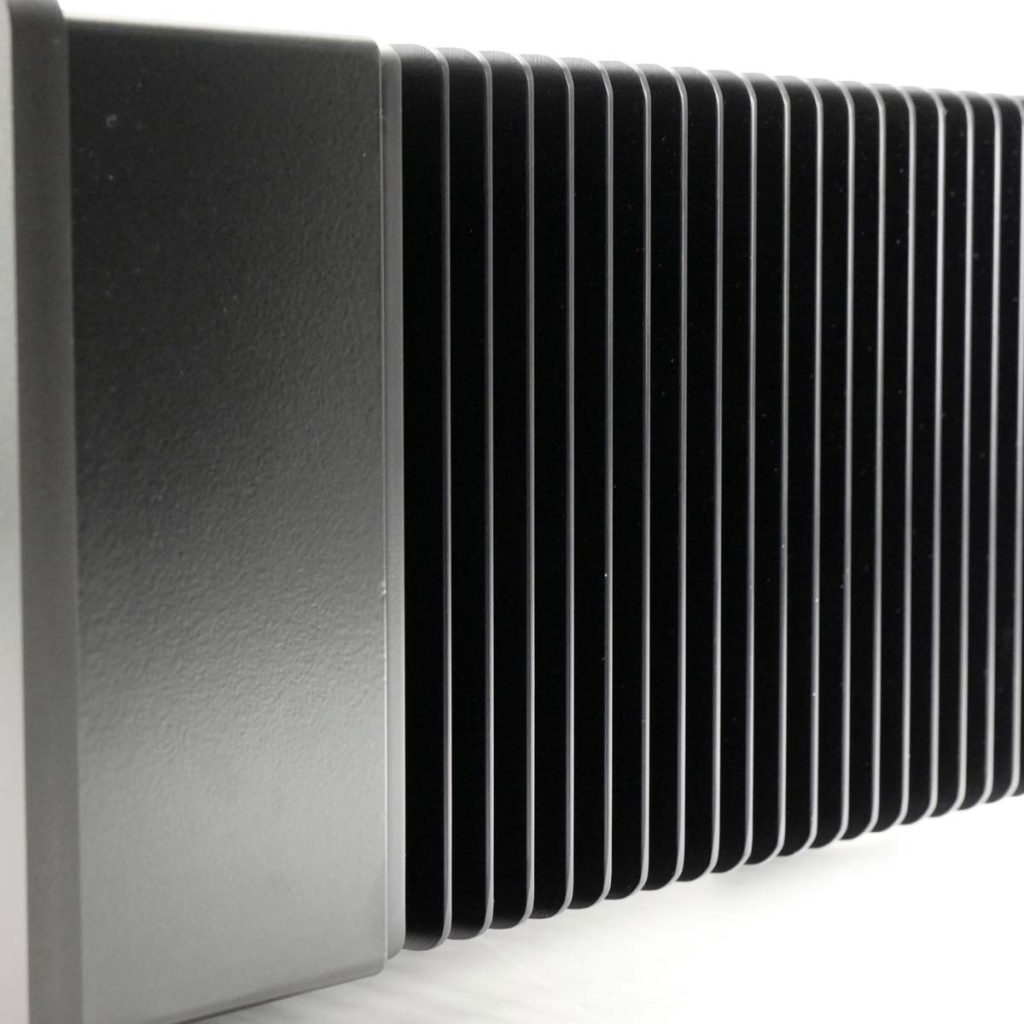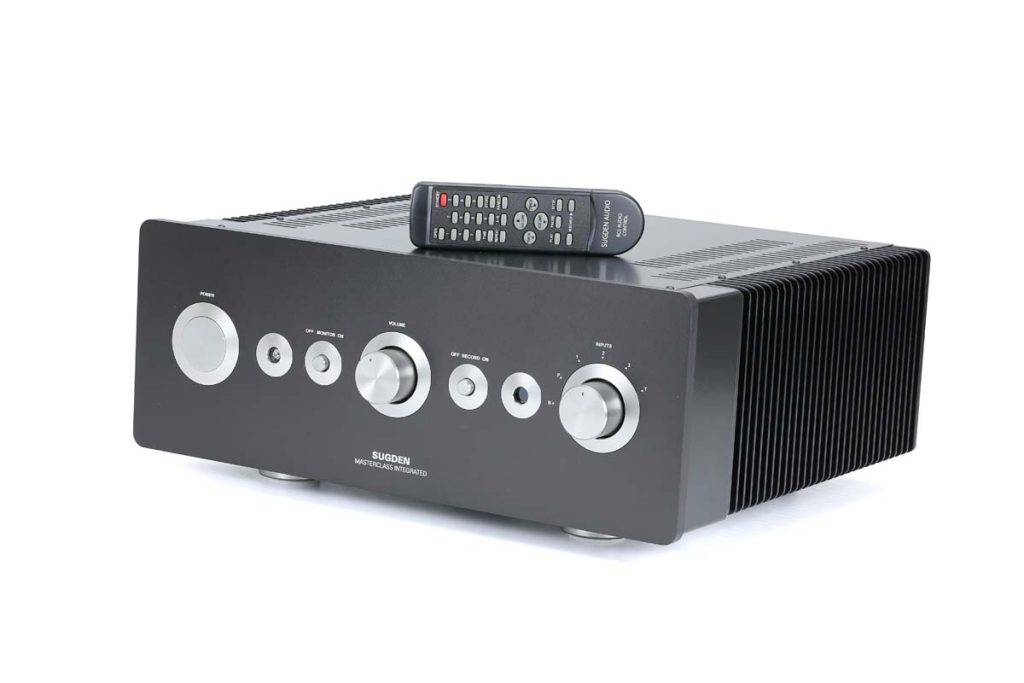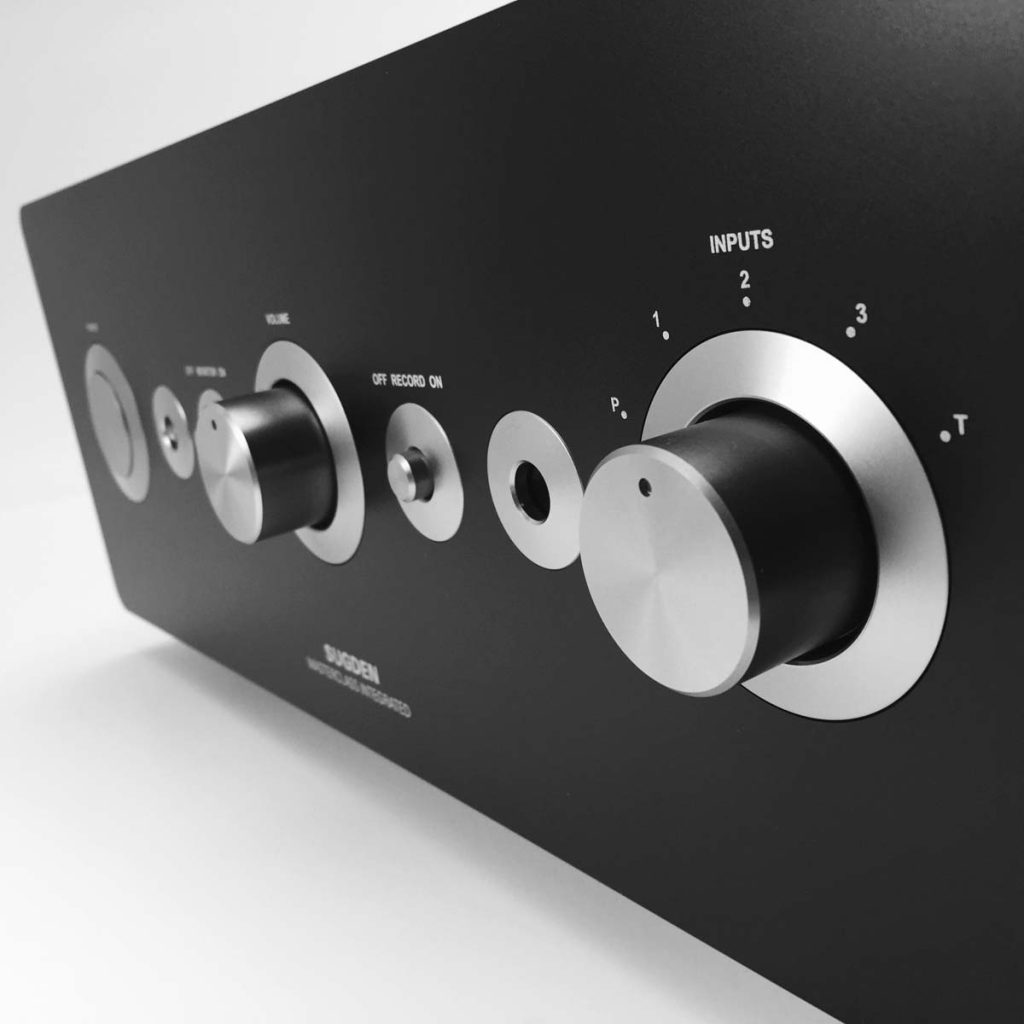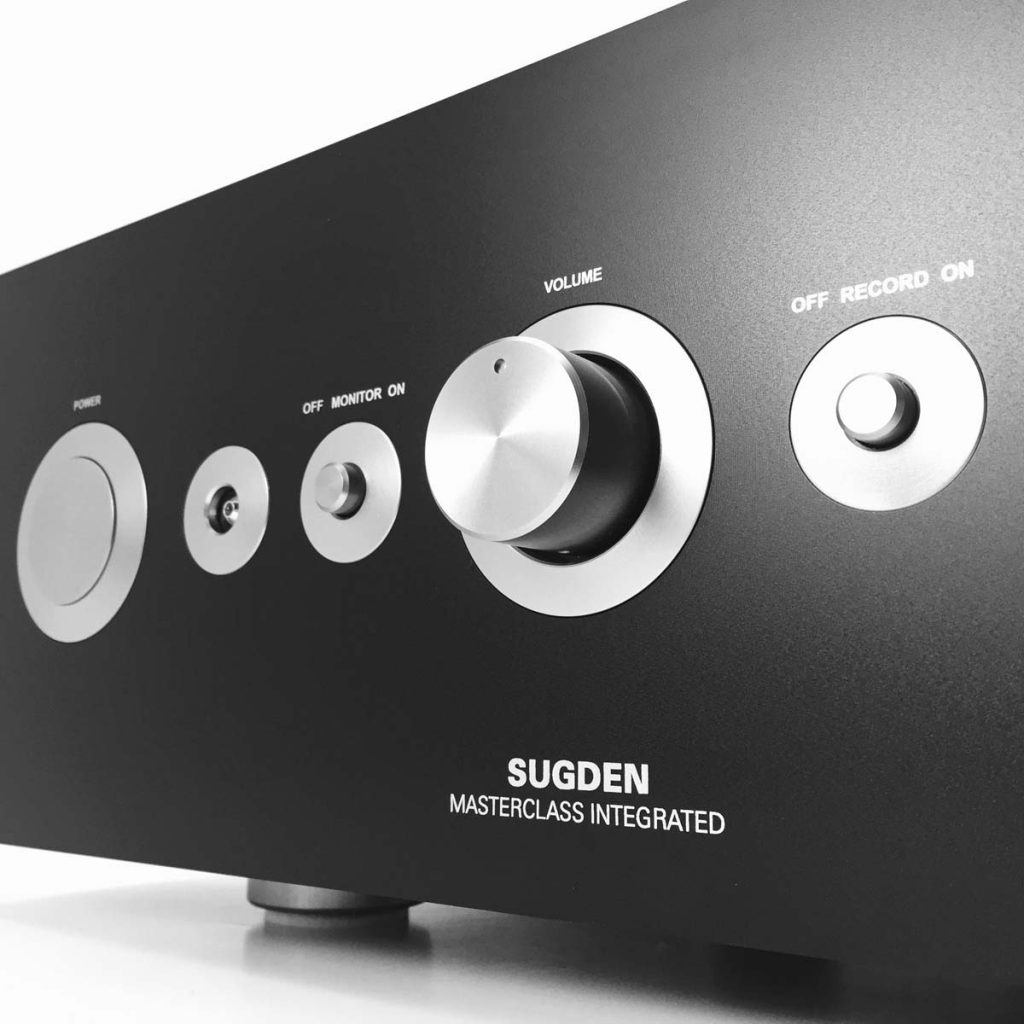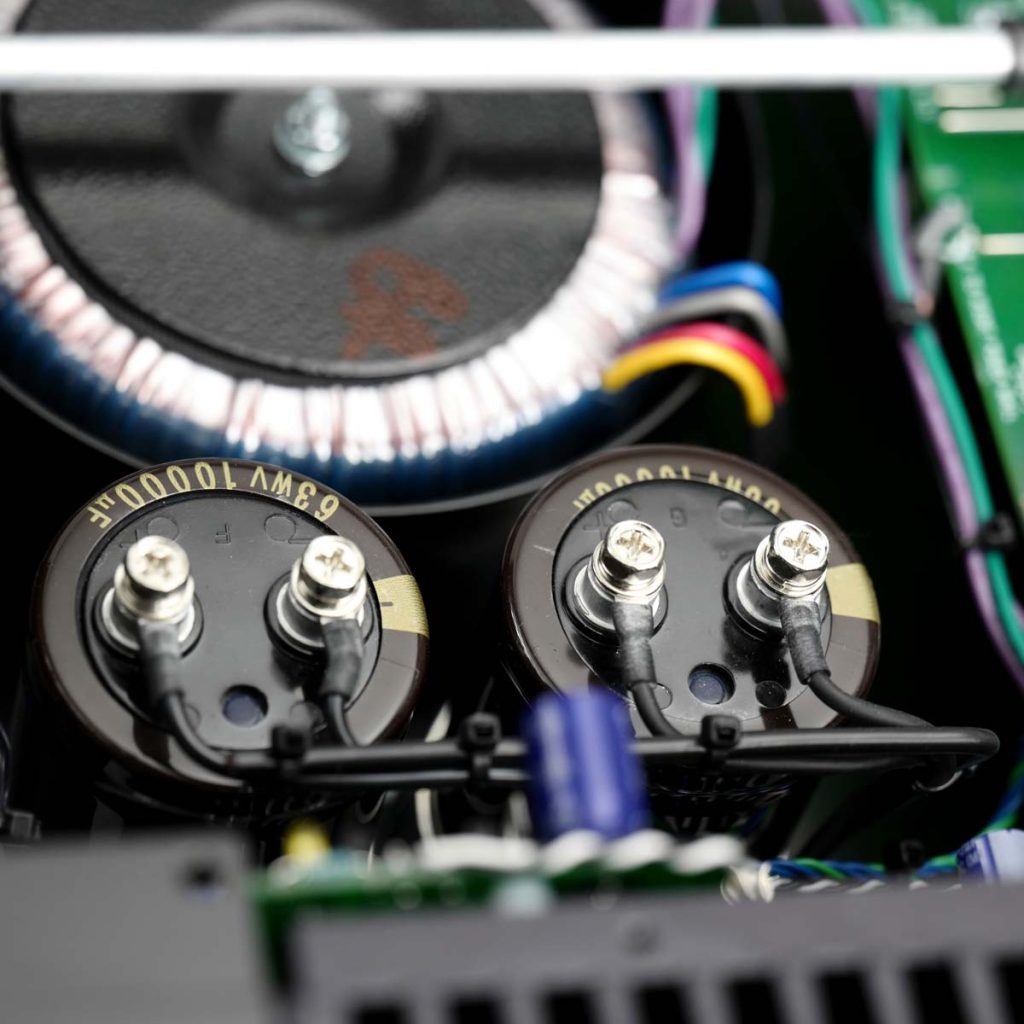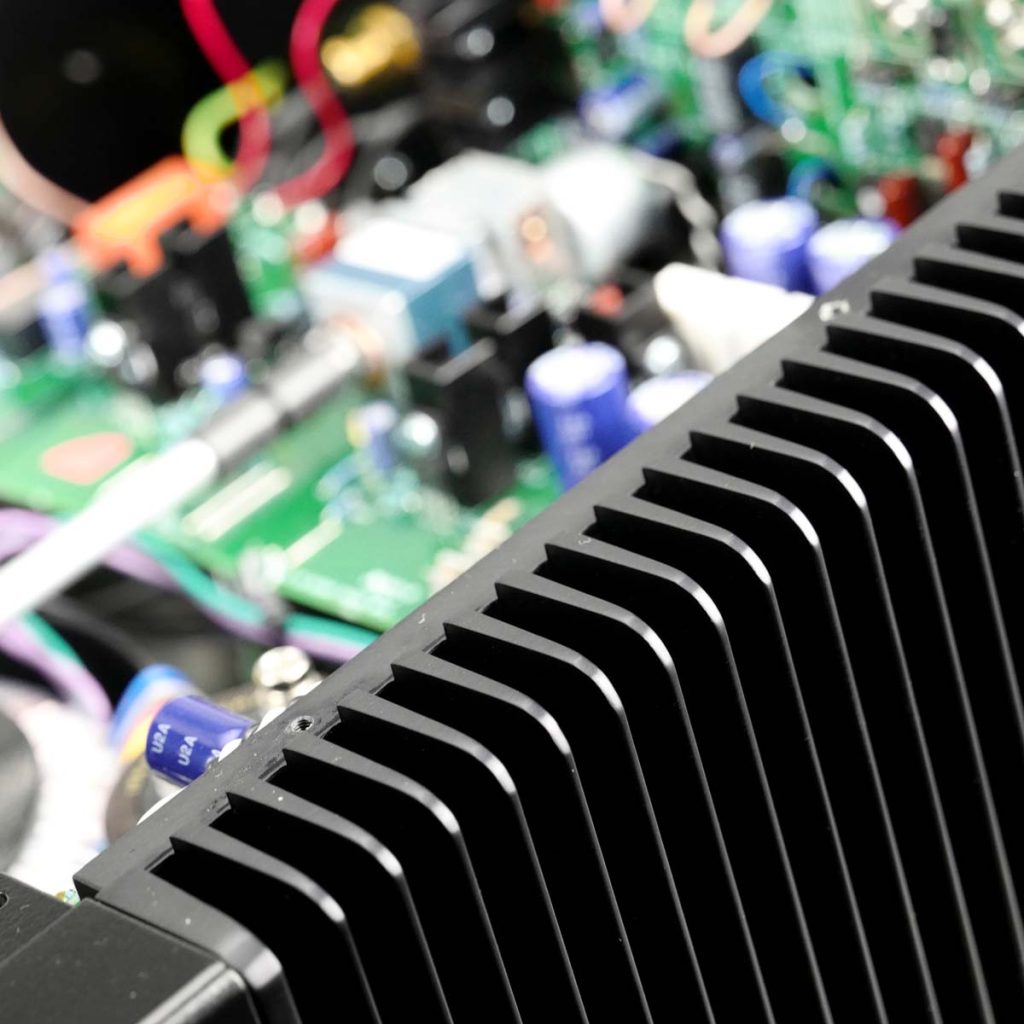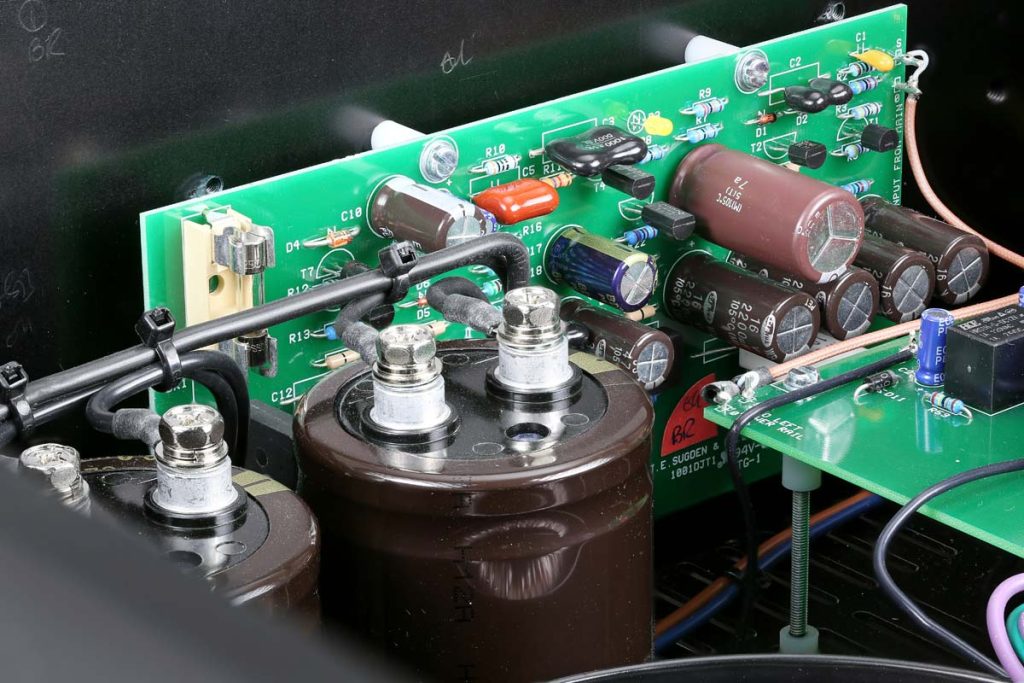Here to Stay
Who says you can only discover what’s new? This is a superb british integrated amplifier with roots reaching back to 1967.
James Edward Sugden was born in 1936 in Cleckheaton in West Yorkshire, northern England. He completed his vocational training at the EMI College of Electronics in London before quickly and easily landing a job as a junior engineer at EMI. After spending some time in weapons development, he ended up in the Broadcast Equipment Division of the company where he worked on sound systems for television stations.
At the beginning of the 1960s, Sugden’s interest in metrology for nuclear research led him to found his own company, Research Electronics Ltd. His professional experience with audio amplifiers and success with transistor circuits in the then unusual Class A operating mode led the founding of J E Sugden & Co Ltd in 1967. Sugden subsequently sold the company in 1980 to its current owner Tony Miller, retrained as a math and computer science teacher, and has since dedicated any spare time he has had to his new hobby, canal boating.
Perhaps somewhere in this meandering corporate history lies the reason why Sugden devices are relatively unknown in Germany. Perhaps it also comes down to the lack of brand identity. You see, no Sugden amplifier from the last 50 years resembles its predecessor, not even remotely. Anyway, I have the IA-4 integrated amplifier in front of me now. This is my first contact with the long-established British manufacturer. I’m delighted, not to say addicted, to the musicality of this chunky hunk of a transistor. While at the same time a bit confused: Have I been on a desert island for the last few decades?
The Sugden IA-4 is the brand’s top integrated amplifier model. As tradition would have it, it is a Class A design. James Sugden is credited with being the first person in the world to have ever introduced a Class A transistor amplifier on the market. He had determined very early on that the crossover distortion of popular transistorized Class B amplifier circuits heavily impaired the sound profile. This distortion does not exist in Class A operation because the transistor, put simply, does not turn off each time after passing through a wave form. Instead, true Class A designs have a bias current that increases so much that the operating point lands in the middle of the performance curve and the music signal to be amplified no longer passes from one switching transistor to the other. This lack of distortion does, however, come at a price: high power consumption and tremendous heat generation since such amplifiers are almost always operating at full throttle. For this reason, Class A amps are never high-performance monsters, but usually have low double-digit wattage figures. With its 33 watts, the Sugden IA-4 has enough under the hood to comfortably drive normal loudspeakers in normal living rooms to deafening levels.
Sugden Audio’s current tagline reads “Rescuing Music from Technology.” In fact, this British company is not one of those manufacturers that offer downloadable white papers without inquiring first. But after asking, I was able to learn that the IA-4 has nothing in common with Sugden’s first integrated amplifier, the A21, which is still available to this day, apart from the Class A principle. Right from the outset, the IA-4 was designed to be the flagship model and is an autonomous development that meets the highest standards. Behind the inch-thick aluminum front, you’ll find gold-plated circuit boards, silver cables, a custom-made 350-watt toroidal transformer, and more. The statements on the circuit technology are more general than detailed: Current feedback is used in the output stage to stabilize the operating point; the input section is DC coupled. The overall concept has been designed with a high bandwidth, with the official specifications indicating 14 hertz to 200 kilohertz (-1 decibel point).
The IA-4 is a conservative integrated amplifier in the best sense of the term. There’s no point looking for any digital functionality. For that, a phono input suitable for MM cartridges expands the available options and there’s a tape loop along with a monitor switch. A (sadly plastic) remote control streamlines operations, but I found using the actual volume control on the device (a classic ALPS potentiometer putters about inside) more fun. The overall impression I get is that of a robust, well-thought-out, no-nonsense device that prefers to keep a low profile in the interests of doing its job properly.
Perhaps my oldest “utility CD” is the sampler The Collection from New York label Chesky. The music is great, but it’s not something I sit around and listen to these days — the disc rather serves as a toolbox with exactly everything I need. This time, I listened to all 16 tracks in sequence and felt like I really heard them for once. The Sugden has a light and airy resolution that makes listening to this disc, which I know inside out, a refreshing experience. Starting in the first few milliseconds as each track projects a new recording room into the listening room is truly delightful. Class A sounds like that, does it? Is this the much-lauded lack of distortion this operating mode is famous for? If it is, count me in as a fan. I want more! Since the piano and cello produce the sounds I’m most at home with, I run the Sugden through the paces with Truls Mørk and Murray Perahia. Mørk’s phenomenal cello from Domenico Montagnana’s workshop (Venice, 18th century), which Mørk plays in his recording of Prokofiev’s Sinfonia Concertante (Virgin Classics 5 45282 2), shines full of noblesse, open and free. The IA-4 reproduces it in realistic size and three-dimensionality at a precisely defined distance behind the speakers. The grand piano, which Murray Perahia also used for his recording of Mendelssohn’s works (CBS IM 37838) in a subpar recording room poorly isolated from the outside world (you can hear the unmistakable rumble of trucks passing by outside), comes across as brightly polished as if it has gained more overtones. It’s almost too much clarity for me. I pull out the balanced XLR cables from the connections of my Electrocompaniet player and plug them into the analog outputs of a Mytek Brooklyn D/A converter (more on that soon in FIDELITY). A digital S/PDIF cable now connects this with the player’s corresponding output. And lo and behold, the cello also gains warmth and body. So for continued digital listening, I stick with the Polish-American DAC.
I move on to Johnny Cash, American Recordings IV. Cash’s charisma along with the morbid and minimalist arrangements more than make up for the vigorous compression of his brutally clipped creaky voice. This is not really audiophile quality. But it’s great fun when such a subtle “unraveler” like the Sugden sinks its teeth into the record expertly produced by Rick Rubin. The amp doesn’t zap you in the face with shortcomings, in this case the “in-your-face” overpowering presence of all the players involved. No, a constructive music lover is at work here, which depicts Cash and the like as the thoroughbred musicians that they are and who only need one note and one tone to hypnotically place the listener under their spell. Some of the best concertmaster solos ever can be found in Nikolai Rimsky-Korsakov’s monumental symphonic suite Scheherazade. In technical recording terms, this poses a real challenge as showcasing the individual violin is important while not neglecting to treat it as a part of the overall string section of the orchestra. The recording with the Paris Opéra Bastille Orchestra under Myung-Whun Chung (DG 437 818-2) is a very finely calibrated measuring device in this sense. And the Sugden doesn’t disappoint: Like a shining silver thread, it gives the violin presence while immediately also taking care of the many other orchestra soloists — the drum, the triangle, a bassoon, a cello — with the same flair and dexterity. The secret to this success is the delicate cloak of air enveloping each instrument. The Brit doesn’t package the orchestra into one compact, multifaceted sound, but retains the diversity and the resulting broad color palette of tones. When the dramatic action (Sinbad the Sailor! The sea!! The storm!!!) gains momentum, the orchestra nimbly leaps into the fortissimi.
The Putumayo sampler Swing Around The World gives the Sugden more opportunities to showcase spirited enthusiasm and a wealth of wonderful details. This is mostly a collection of small ensembles captured with exquisite recording quality. Here, a device has to lay all its cards on the table in terms of spatial expression and dynamics. The Brit emphatically demonstrates just how precisely it can divide a recording room into depth, height, and breadth. In the vocal numbers, it impressively retains the dynamics of the human voice — there is good reason why the words “(ex) plosive sounds” are used as a description …
The Sugden IA-4 finally won me over with an ECM record: Sangam, a live recording of the Charles Lloyd (saxophone), Zakir Hussain (tabla), and Eric Harland (drums) trio. This is no light meal to easily digest as Lloyd unleashes some mind-blowing solos, and Hussain fires a barrage of fiery beats from his tabla. Actually, I only occasionally allow myself to listen to the incredible drum solo on the first track, otherwise the whole house would join in the party. The wealth of nuances and joyous details that the Sugden presents seems to seriously light up the highly complex music. It’s astonishing how easy it suddenly becomes to understand the dense rhythmic textures. And I have absolutely no desire to crank up the volume, as the three musicians’ musical passion gives me an endorphin rush just at room volume.
Wow! So much fun, and all it is is a well-known analog circuit principle with almost 50 years of continuous refinement under its belt. The Sugden IA-4 may project an air of typical British innocence on the outside, but there’s an unmistakably big beating heart under the cover that’s designed to do music some justice. This integrated amplifier is able to match up to the industry’s big hitters. And then some. I am extremely impressed.
Integrated amplifier
Sugden IA-4
Output power (4Ω): 2 x 33 W | Inputs: 4 x line unbalanced, 1 x phono MM (RCA), 1 x line balanced (XLR) | Outputs: 1 x speaker, 1 x tape out, 1 x pre out | Special features: remote control | Finishes: brushed aluminum, black aluminum | Dimensions (W/D/H): 43/16.5/44 cm | Weight: 20 kg | Warranty period: Two years | Price: €5500
Gaudios KG
Brandhofgasse 11
8010 Graz
Austria
Accompanying Equipment
Turntables: Bauer Audio dps 3 | Tonearm: Bauer Audio tonearm | Cartridge: Lyra Kleos | Phono preamplifier: Bauer Audio Phono | CD player: Electrocompaniet EMC 1 UP | DAC: Mytek Brooklyn | Speakers: Ayon Seagull/c, Dynaudio Contour 30 | Cables: Naim, Fadel, Chord | Power supply: Music Line Powerigel | Accessories: Bauer Audio Rack, granite slabs

